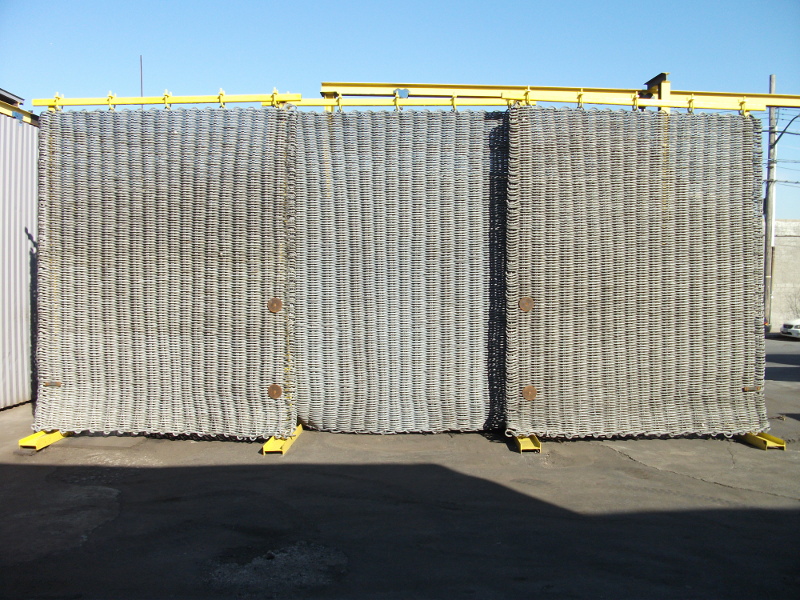
A blast wall is a barrier that protects structures and lives from explosive blast pressure, debris and fires. Blast walls prevent fragmentation and flyrock from traveling at high velocity and reduce peak explosive pressure from shockwaves that can impact the surroundings.
When to Use a Blast Wall
Blast walls are erected to safeguard property and personal from anomalies. These barriers absorb the energy created by an explosion and block shrapnel and debris from causing unintended damage or loss.
How Blast Walls Are Utilized
Blast walls are often set at 90-degree angles to surround a blast or shield a facade. They can cover detonations underground or underwater. They can also be positioned overhead or on roofing systems, both internally and externally. Blast walls have various uses throughout numerous industries, including construction, mining, airports and processing facilities. They protect structures and people from explosions, which cause flying projectiles and fires. Explosions can either be controlled or accidental.
In some cases, explosions come from an outside force, such as an attack. Wherever the explosion may originate from, it is important to have barriers in place to protect against it.
Below are some additional common applications of blast walls:
- Construction or mining operations erect blast walls before breaking and removing obstructive rock.
- Blast walls are positioned at pedestrian entry control points, like parking garages and airport terminals, to shield vulnerable facilities from blast fragmentation and blazes.
- Facility managers can retrofit older buildings with blast walls to withstand heavy explosive forces and enhance safety.
- The risk of chemical explosions and consequent injuries and damage, particularly at petrochemical manufacturing plants and research labs, can be mitigated with blast walls.
- Military bases use two or three blast walls around military aircraft to protect them from each other, but also to safeguard people if a terrorist attack occurs.
- Blast walls contain gas and vapor cloud explosions to help minimize the number of flammable gases the explosion consumes — an application most common in processing industries.
- Roadwork around the United States often requires blasting, whether that be to cut through part of a mountain or install pipes.
- Manufactured equipment that requires high-pressure testing can cause unexpected explosions. However, a blast wall or barrier can help prevent employee injury.
Characteristics of an Effective Blast Wall
Blast walls need to have specific characteristics that enable them to be effective at protecting or preventing damage to people or facilities. Without these characteristics, a blast wall is less likely to have the desired outcome and will not provide as much protection.
One of the most important characteristics of a blast wall is its material. Stainless steel is one of the most effective materials a blast wall can consist of since it has a high melting temperature and is durable. The material should also be heat resistant to the fullest extent possible. A blast wall canopy can prove additionally effective since it covers more area than a straight wall.
Anti-ram capability is helpful against a vehicle attack. The wall's material should also be malleable, which means it can absorb the energy from a blast without failure.
Blast Wall Materials
As mentioned above, a desirable attribute of a blast wall is high-quality material. While you can make a blast wall from concrete, stainless steel is the most effective material to use.
Steel has several qualities that make it stand out as the chosen material. Stainless steel is corrosion resistant, which protects it from water. Steel is suitable for blast walls built in wet environments, but overall, it can be beneficial anywhere. The wall will last for an extended period since it takes a much longer time to rust.
Because explosions often result in fire, stainless steel is a good choice because it has a higher melting point than other materials. It's also one of the most durable and ductile materials, which helps it absorb the energy from a blast without breaking.
Blast wall materials are important because less durable ones result in less protection. Employees and bystanders want peace of mind knowing they will be safe if an explosion happens. If you use stainless steel blast walls, employees, civilians and military members are more likely to stay safe in any explosion, whether it's planned or unplanned or results from an attack.
Contact TM International, LLC for Blast Walls Today
TM International, LLC provides woven wire blast walls for many industries and applications. We offer linkable, noncombustible barriers featuring a lightweight design for easy removal once blasting is finished. These noninvasive, eco-friendly blast walls can be used throughout multiple projects and eventually recycled. Our proprietary design allows hazardous fumes to vent. In addition to stock sizes, we can manufacture custom sizes from 4-by-6 feet to 14-by-16 feet.
TM International can create reliable, versatile blast mitigation and protection for any application. Contact us online to learn more and get a quote.




